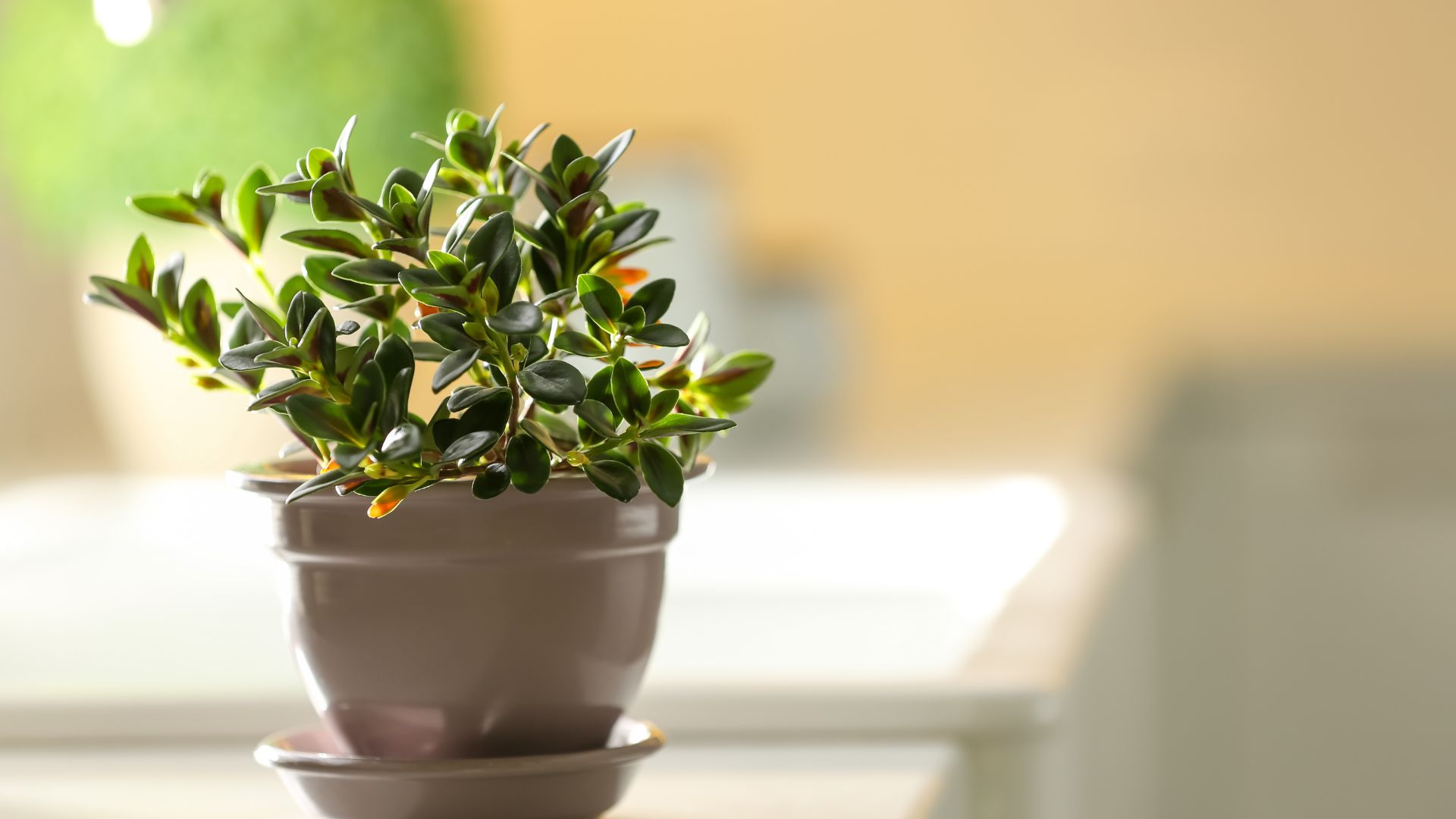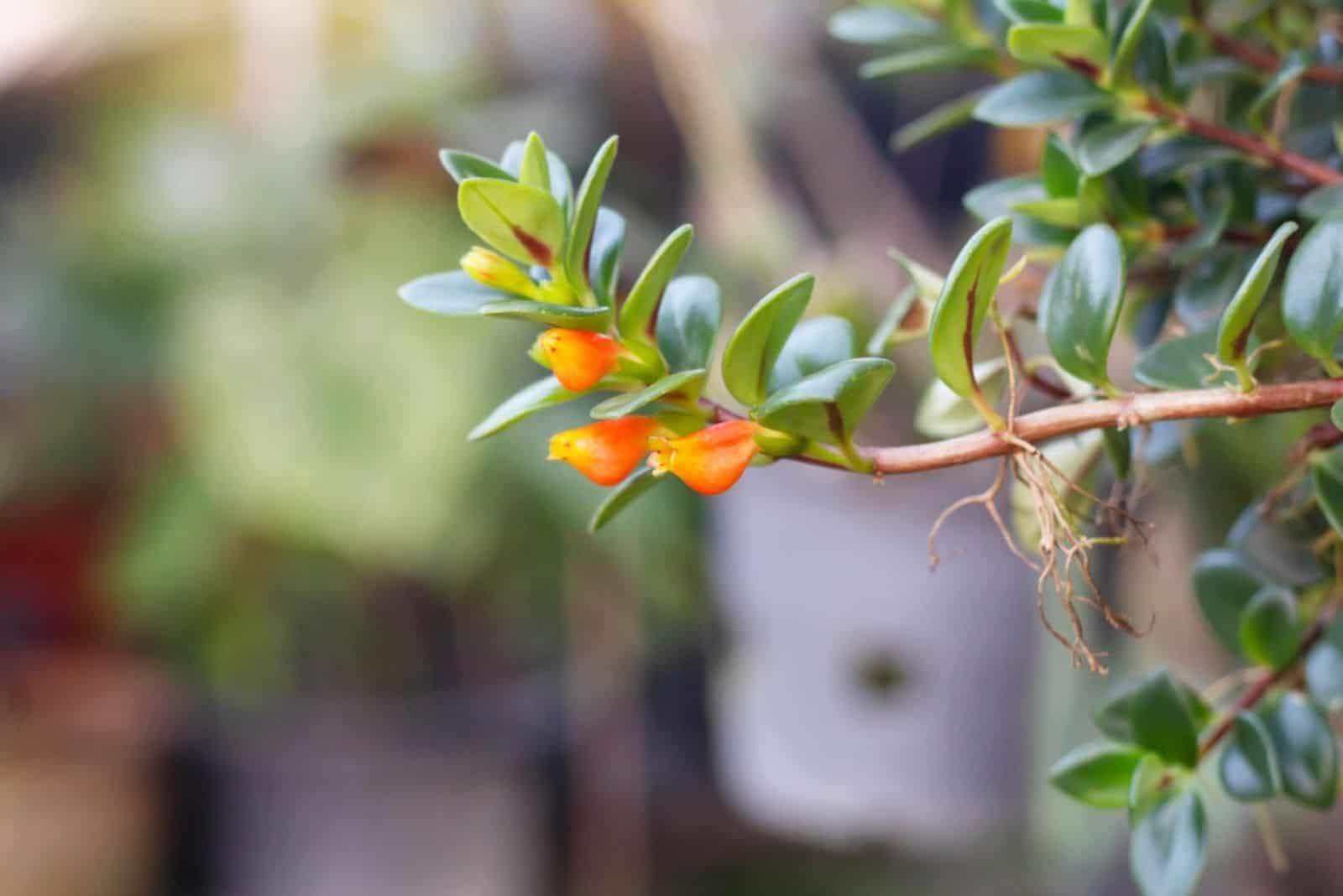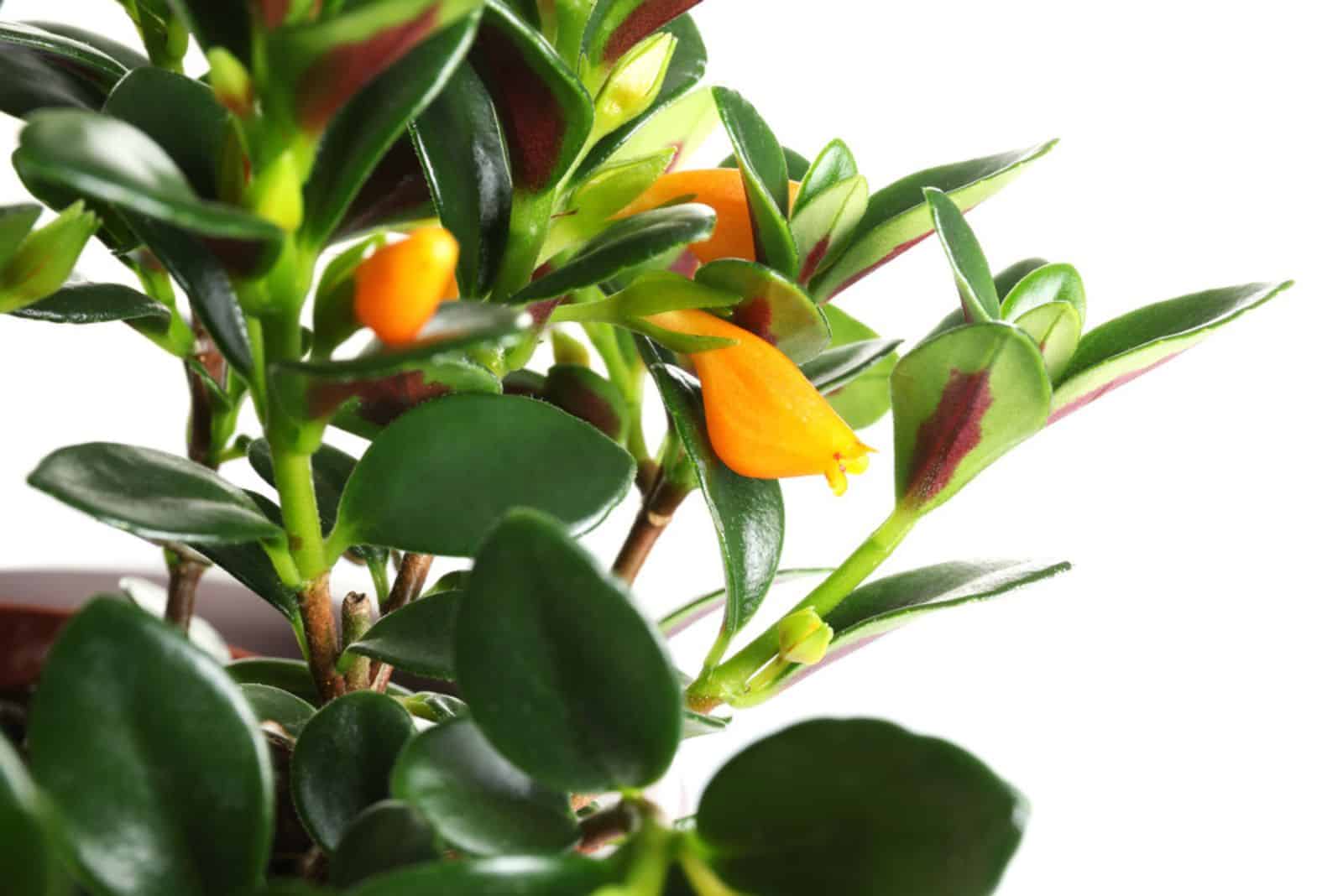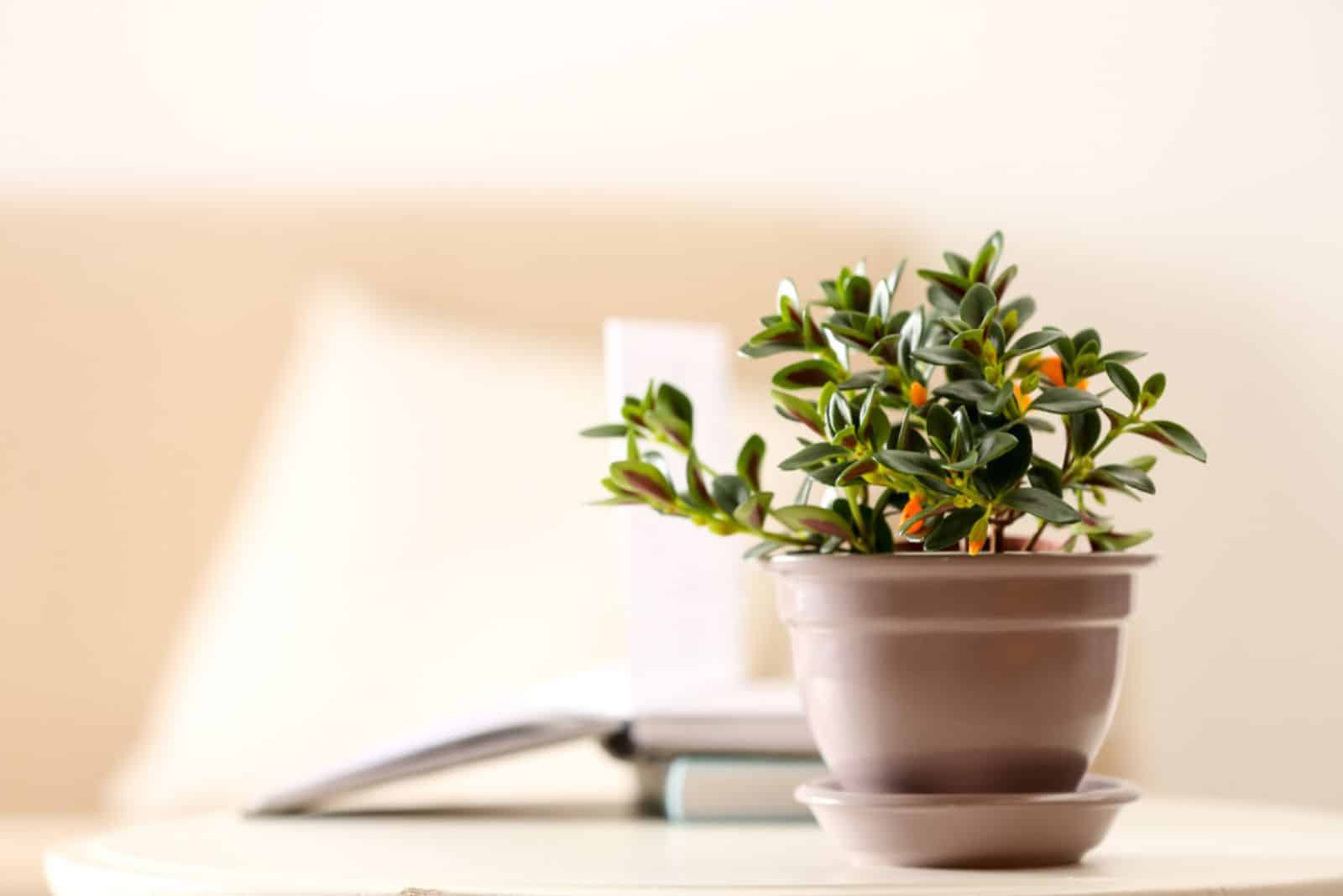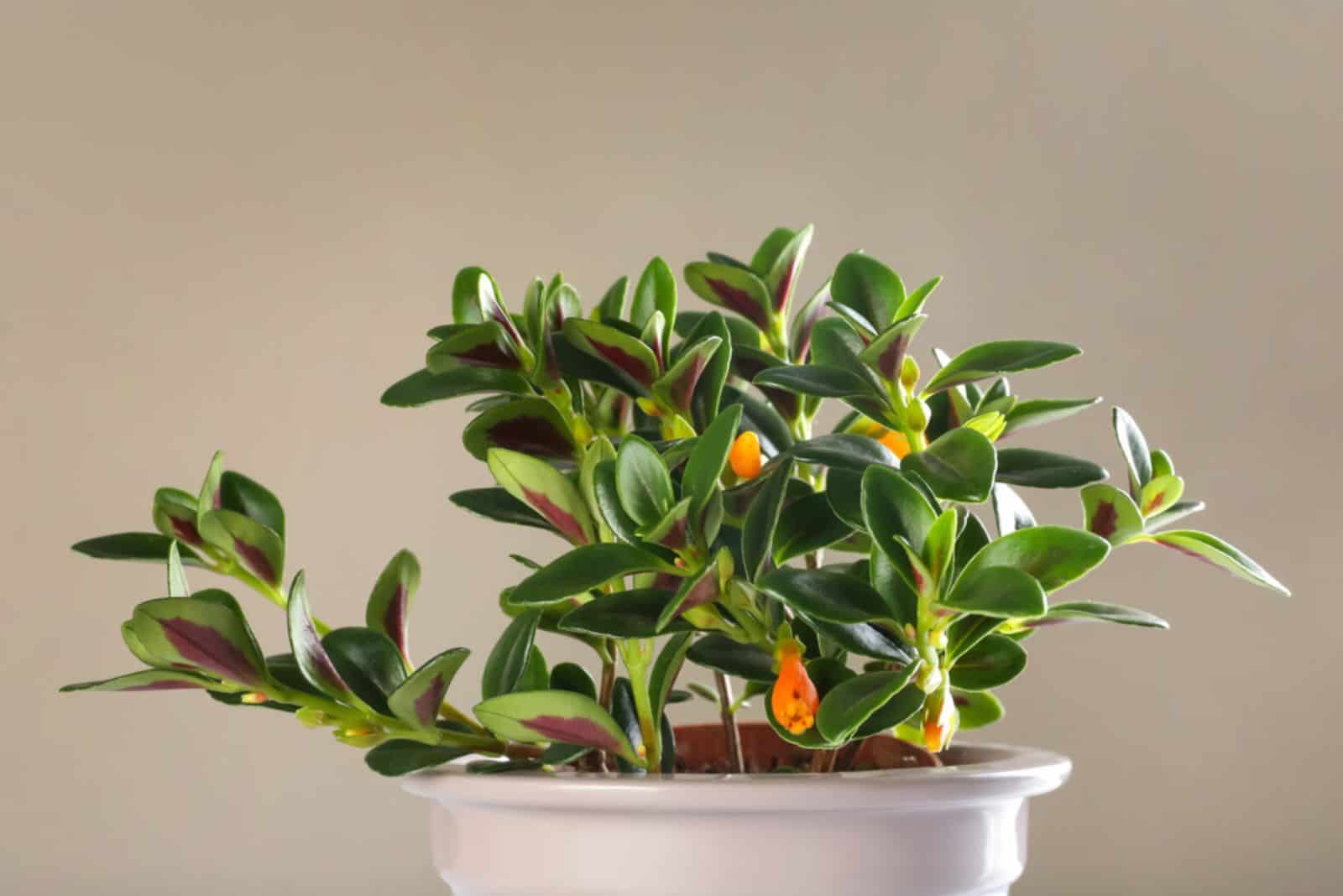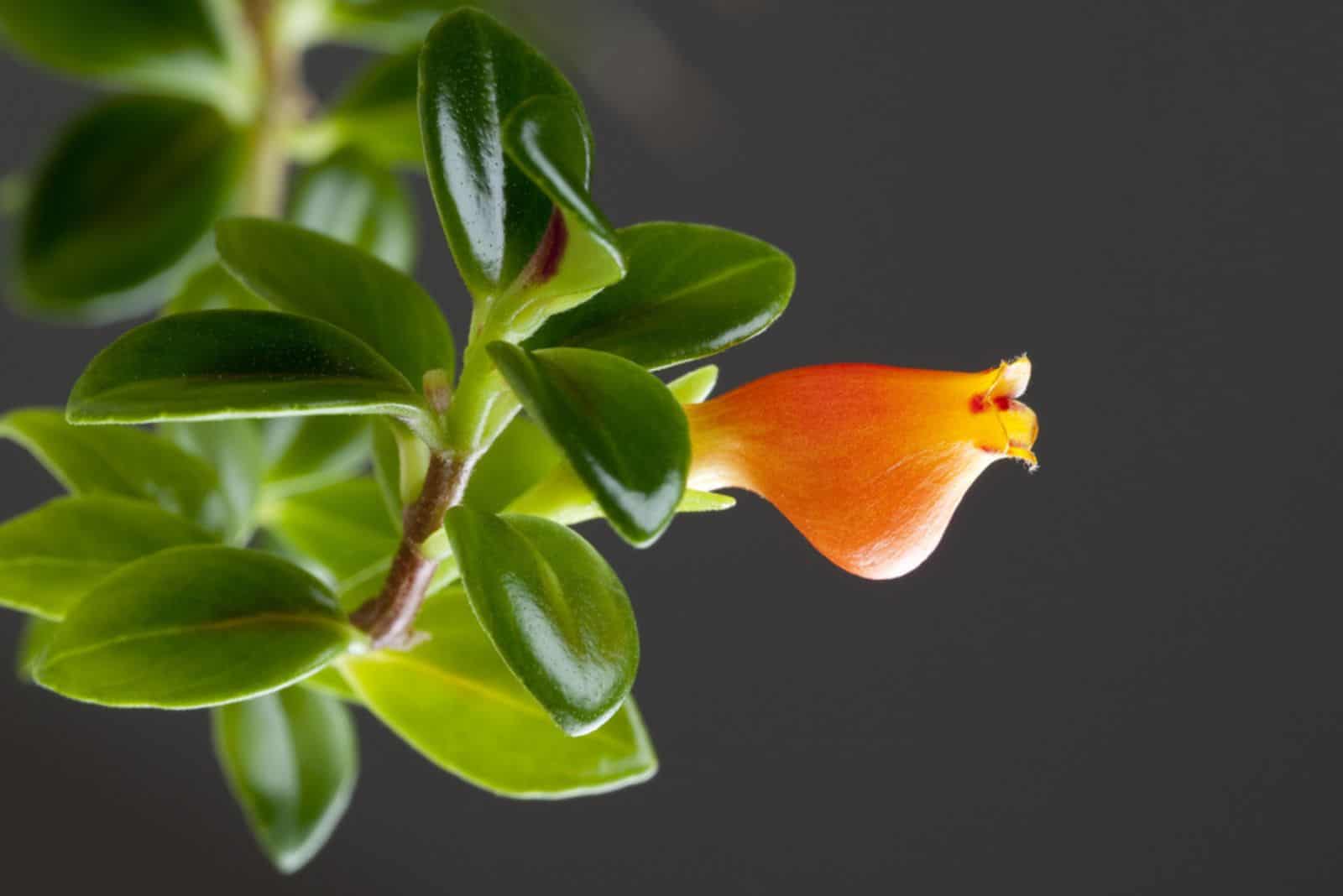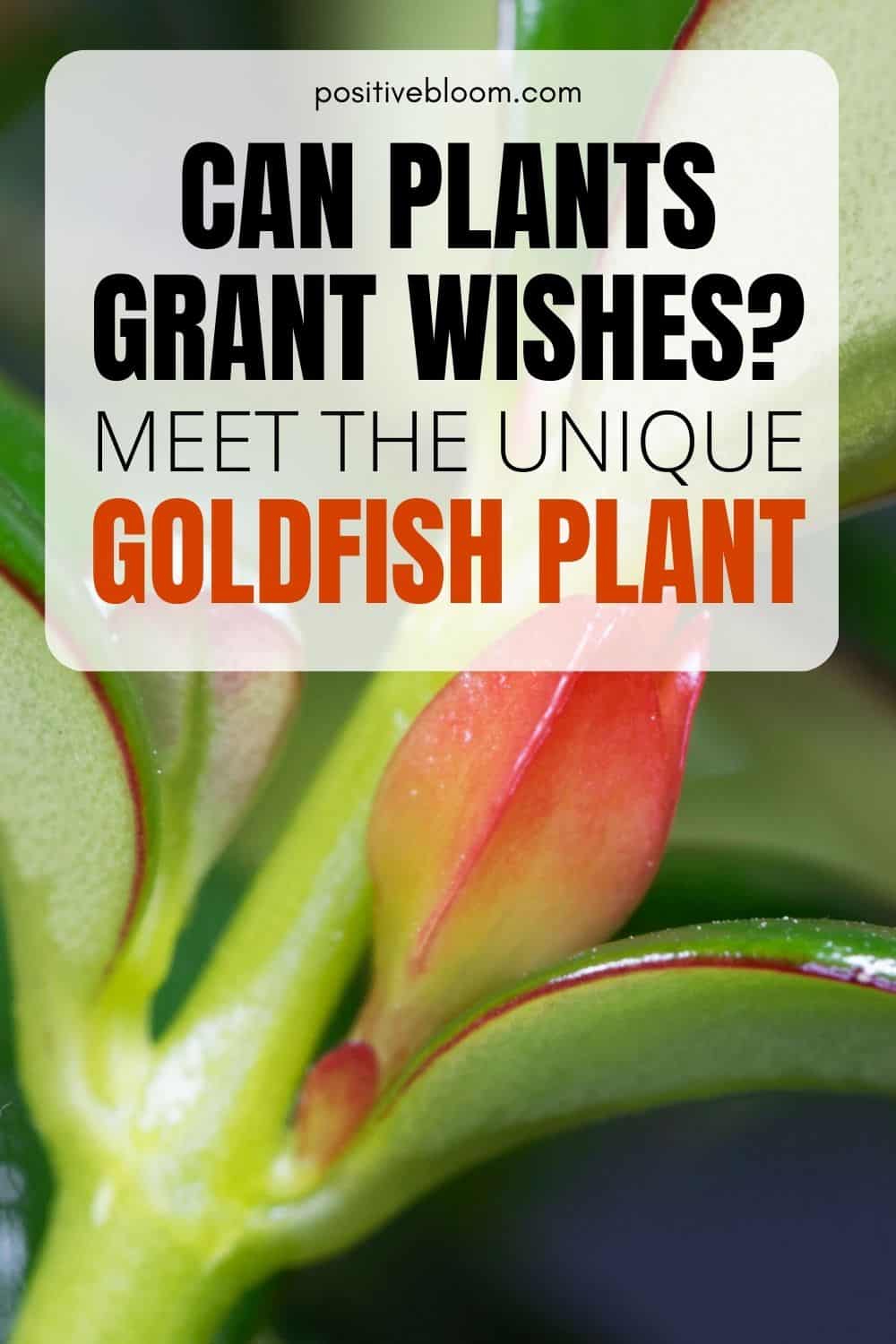You should definitely check out the Goldfish plant if you are looking for something that would look great with your goldfish aquarium. Your space will have a lot of beautiful orange colors — but hey, orange is the new black, right?
One of the most intriguing plants we have ever come across is definitely this unique hanging plant. Although its fleshy, deep-green leaves are striking, they are not the plant’s most impressive trait. This plant’s flowers have the appearance of yellow, orange, or red goldfish without airy fins.
Not only are they one of the most interesting houseplants you’ll ever see, but they are also relatively easy to take care of. If you want to learn more about the Goldfish plant and how to take care of one, then stay tuned!
What Is The Goldfish Plant?
The Goldfish plant, common names Columnea gloriosa and Nematanthus gregarious, is a perennial plant that’s native to Brazil, Costa Rica, Southern Mexico, and also Central America. They belong to the Columnea genus, which contains over 150 different species.
This plant is also an epiphyte, which means that it usually grows on other trees or plants in nature. They are not considered parasites, but rather plants that simply use other plants as anchors.
When it comes to their appearance, these plants produce small, fleshy, and shiny leaves with an intense green color. The leaves are usually 2 to 3 inches long, with some varieties having hairy leaves.
The leaves are attached to long, vining stems that can reach up to 3 feet long, which is why they are grown as hanging plants. However, the most prominent feature of these plants are definitely their lovely blooms.
The Goldfish plant produces tubular orange flowers that resemble a goldfish taking a leap, hence the name Goldfish plant!
They usually start blooming in spring and summer, though this refers to mature plants only. Some species might also start producing flowers at some other time.
If you have a young Goldfish plant, you might expect them to start blooming after six to ten weeks. These are generally long-living plants that can survive for up to 10 years with repotting!
Some of the most popular varieties include ‘California Gold’, which produces yellow flowers with red margins, “Firebird” and “Aladdin’s Lamp”, which produce red flowers and dark green leaves, and also the “Chanticleer” with its compact growth habit.
Goldfish Plant Care Guide
Although epiphytes are sometimes thought of as needy, they grow like crazy when the required conditions are provided. Since these types of plants rely solely on photosynthesis as their main source of energy, you should ensure that they get plenty of light and moisture from the air.
They thrive in USDA hardiness zones 10 and 11, though they can be grown indoors as long as ideal growing conditions are provided.
Now, let’s dive into Goldfish plant care to learn how to take care of this strange plant.
Light Requirements
Goldfish houseplants are usually grown in hanging baskets because they produce long vines with leaping goldfish like leaves swaying around the air. As we mentioned, they mainly rely on photosynthesis.
This means that they need light to grow and thrive. Goldfish plants require at least 13 hours of daylight for proper growth and development. They prefer growing in bright indirect light.
They shouldn’t be kept in direct sunlight as it can dry the plant out and burn those lovely little fish flowers. Therefore, I would suggest keeping this plant near an east-facing window.
If you can‘t find the perfect space for this indoor plant, you should invest in some grow lights.
If your plant appears leggy, you should immediately fix your light conditions.
Soil Requirements
Providing a good growing medium for these types of plants is half the job. They need coarse, well-draining soil that is also porous and rich in nutrients.
Now, you could use store-bought African violet potting mix for your little epiphyte. However, the potting soil should also contain materials such as perlite, peat moss, and vermiculite in equal parts. These will ensure that the soil holds just enough water and drain the excess.
I would also advise you to buy a small pot with drainage holes in the bottom, which will ensure that the plant gets proper drainage.
Water Requirements
Even though we are talking about the goldfish plant here, we shouldn’t ever give it too much water. Overwatering is one of the most common issues when it comes to Goldfish plant care, which is why you have to be extra careful!
The watering habits change during different seasons. For instance, you should water them religiously during the summer, especially when they start blooming. The soil should be constantly moist.
However, you should ease up with watering once the colder months arrive — it seems that this can encourage good flower production. Keep in mind that the soil should never be completely dry.
Checking if the top few inches of the soil have dried out is the best method when it comes to watering the Goldfish plant.
If you notice that the green leaves are falling off, then you have probably overwatered your plant. Check the soil to see if there is any rotting.
Temperature Requirements
Temperature also affects the Goldfish plant greatly. Even though they originate from warm and humid environments, they can still thrive in moderate room temperatures.
For instance, this plant prefers growing in temperatures from 65 to 75 degrees Fahrenheit.
They are not frost-hardy, so keeping them in cold temperatures might result in leggy growth. Therefore, you should avoid putting them close to drafty windows or vents.
Protecting them from high heat sources is equally important. Avoid placing them close to radiators, ACs, or fireplaces, which can easily dry out your plant and result in the loss of leaves and flowers.
Humidity Requirements
As we mentioned, these plants are epiphytes whose well-being depends on air moisture. Therefore, providing them with moderate humidity to high humidity is a must.
I would recommend you invest in a humidifier if the air in your house gets particularly dry. Another method to boost humidity involves creating a pebble tray, which is basically adding some pebbles to a tray, filling it with water, and then putting the plant on top of the humidity tray. As the water evaporates, it will provide enough moisture for the plant.
Misting them on a daily basis is another free option, though it can sometimes be tiresome. This involves simply spraying them with water — you just have to make sure that you spray them with room temperature water, as cold water can easily damage their lovely foliage.
Fertilization Requirements
You will have to give them some plant food if you want them to produce those lovely leaping goldfish flowers. These plants are usually fertilized during the growing season, especially in the period when they start blooming.
For instance, you could give your Goldfish plant half a dose of a liquid fertilizer that contains phosphorus every other week during the growing season to encourage blooming. However, you can also use controlled-release fertilizer pellets.
You should give them fertilizer once a month during the winter season.
Repotting
Since they are epiphytes that grow on other trees, they produce shallow roots, which is why they need plenty of space for their roots when planted in pots. This means that you won’t have to repot them every growing season.
Interestingly, these little plants like to be pot-bound — it seems as though they produce more flowers while pot-bound. Still, you will have to repot them after two or three years. You can gently root-prune the parent plant before repotting it to promote the development of new roots. Don’t repot into significantly larger pots; instead, only move up one size.
Propagation
Propagating these lovely plants is relatively easy. You can use the stem tip cutting method — all you have to do is find a healthy stem that is 3 inches long and preferably without any flower buds. Then, you should dip it in a rooting hormone to boost root development.
Put the cutting in a light potting mix and make sure to keep them nice and warm. You can either cover them with plastic wrap or put them on a seedling heat mat. Be aware that these new plants won’t bloom after the summer.
Pinching Off
Pinching off the growing tips after blooming will encourage new branching and bushier growth. The plant will look happy and healthy the whole year round!
To keep it from growing lanky, maintain the stems between 12 and 18 inches (30 and 45 cm) long. You can use these stems for propagation.
Common Issues With The Goldfish Plant
Unfortunately, this plant can also experience some troubles while growing. It is susceptible to certain plants and diseases, but it is also sensitive to sudden temperature changes, inadequate watering, and low humidity.
Let’s look at it in more detail.
Pest Infestation
Goldfish plants are susceptible to spider mites, aphids, scales, and mealybugs. Spider mites, which are tiny insects, usually reside on the undersides of leaves. They produce small, silken webs, just like spiders do! However, these mites usually live on indoor plants in warm, dry conditions.
Little white insects called mealybugs steal plant juices and drain off all of the nutrition. Mealybugs are commonly seen in colonies on the underside of leaves, where they usually reside.
Scales are distinctly formed like brown discs. Sometimes, the waxy coating on these insects makes them look like white cotton tufts clinging to the plant’s leaves. Scales love to consume plant juice and steal those delicious nutrients.
Aphids are small pests that frequently leave a sticky residue on the leaves. Despite their tiny size, these creatures can severely harm your Goldfish plant. After withering and curling of the leaves, a sticky substance appears. Serious infestations frequently result in wilting.
How To Fix A Pest Infestation
It can be challenging to get rid of these annoyances, particularly if you are dealing with a serious insect infestation. My succulents were sorely threatened by pest infestation, but I managed to get rid of them!
Mealybugs can be effectively treated using insecticides and insecticidal soaps.
To eliminate scales, plants are frequently sprayed with water. An application of insecticidal soap is required if the infestation is severe or the insects come again.
The most commonly used remedies for treating spider mite infestations include neem oil, rubbing alcohol, hydrogen peroxide, and insecticidal soap. Repotting, letting the soil dry out, and including natural predators are a few alternative methods. Spider mites can be removed by brushing the leaves with a solution of rubbing alcohol and water.
Aphid infestations can be managed in a manner similar to how spider mites are dealt with; by using insecticides, neem oil, or physical removal (though this is tough because they are extremely small).
Leaves Changing
Now you can deal with leaf drops, leaves turning brown and yellow, and also leggy growth. All of these issues are caused by improper plant care, though some leaf discoloration can be a result of pest infestation.
Let’s take a look at the droopy leaves first. We all know that tropical regions are pretty warm, right?
Well, if these plants are exposed to any temperatures lower than the ones they prefer, they will start acting up by curling and drooping their leaves. This only means that your plant is cold, so make sure to keep the thermostat hot!
Brown and crispy leaves usually appear when the plant has been exposed to direct sunlight for too long. Remember that these plants are epiphytes, meaning that they grow in partial shade under big trees. This is why I would advise you to put these plants indoors for the whole year round. This way, you will have control over light conditions.
Yellow leaves might appear due to overwatering. If you notice any changes, or if the soil feels soggy, make sure to ease up with the water. You should also inspect the roots for root rot. If you see any damaged roots, make sure to trim them off and put the plant in fresh soil.
Frequently Asked Questions
1. Why are Goldfish plants called Goldfish plants?
Goldfish plants are called goldfish plants because they produce small, tubular orange and yellow flowers that look like leaping goldfish. So, if you can’t install a pond filled with goldfish, consider planting Goldfish plants all over your garden!
2. How much light does a Goldfish plant need?
These plants are epiphytes, and they are not used to direct sunlight. However, low light can make them appear leggy. Therefore, they will thrive if you keep them in bright indirect light. You can keep them near an east-facing window.
3. How do you care for a Goldfish plant?
You will have to provide it with well-draining soil that is also porous. Consider adding perlite, peat moss, or vermiculite to the potting mix. Keep it in warm temperatures from 65 to 75 degrees Fahrenheit.
These plants also thrive in moderate to high humidity. You can mist them if the humidity in your home is low. Fertilize them when they start blooming and apply liquid fertilizers every other week. During the winter season, you should fertilize them once a month.
Keep their soil moist and water them religiously once they start to produce flowers. Check the soil before watering, and water them again once the top few inches of the soil have dried out. Repot them once every 2 to 3 years, and use stem cutting for propagation.
To Sum Up
Goldfish plants are a great option for both plant and pet enthusiasts. I have always wondered if a Goldfish plant can grant wishes… I guess I have to get one and try it myself!
These plants are very unique — the leaping goldfish flowers can definitely make your place look more lively.
Even though you have to be careful when it comes to plant care, I generally think that they are easy to maintain. Just make sure to provide them with warm temperatures and well-draining soil, water them regularly, and keep moderate humidity.
Fertilize them to see those little fishes all over the plant, and ensure that they get enough bright indirect sunlight.
That’s all, folks!
I hope this article was helpful. Until next time!
Like this post? Share or pin it for later!

